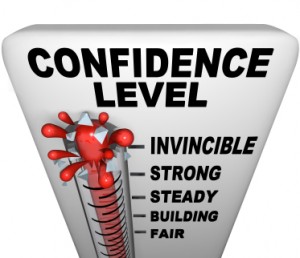First, let’s surface what you probably already know:
• Americans rank the fear of public speaking far above the fear of death (41% to 19%, respectably.) Way overused by speaking coaches, this statistic was first reported by the London Times in 1973 in a survey of 3,000 Americans.
• No one has actually ever died from public speaking (except, perhaps, William H. Harrison, the ninth president of the United States. He died of pneumonia soon after delivering a two-hour inauguration speech outdoors in the winter without a coat or hat.)
• “Butterflies can be your friends.” (Admit it — you DO know this, at least intellectually.)
Yet: do your hands still sweat at the mere idea of speaking in public? Does your stomach flip-flop? Do you avoid public speaking at all costs?
Well, bad news first: there is no golden bullet for stage fright. Although some fearful speakers swallow beta-blockers (drugs developed to manage cardiac arrhythmias,) the reality is that no outside intervention will reliably rescue you. Which brings us to the good news!
You are capable of dealing with stage fright. The antidote lies within you. And, surprisingly, the antidote is not only to practice, practice, practice! (Although you must practice a presentation at least 4-6 times to feel proficient anyway.)
Three Guidelines
If you’re serious about changing your pattern of stage fight, I’d like you to make a commitment: Take some time to read and reflect on these guidelines before running off to the next activity on your “to-do” list. If you give yourself time to fully integrate them, I guarantee that you will feel more comfortable the next time you present.
Guideline #1
To quote speaking guru Jean Hamilton: “Become friends with the part of you that is scared.”
In order to change our patterns, we need to accept our whole selves. Too often, my clients truly hate the part of themselves that is nervous. They’re incredibly hard on themselves! These clients end up being “nervous about being nervous,” compounding their discomfort and alienation. This downward spiral quite neatly lays the groundwork for a dreaded “out-of-body” experience when they present.
To quote Hamilton again: “Often the scared part of ourselves is diligent; it really wants to do a good job. It has a lot of energy, and it can also be vulnerable. Diligence, energy, and vulnerability are valuable assets to a presenter.” In fact, add “authenticity” to that list of characteristics, and you’ve got all it takes to be an effective, dynamic presenter.
Love that part of yourself that is scared. Don’t reject it. You may even want to give it a name, and to picture what it looks like. Then accept it. You will feel more whole, stronger, and more full of integrity.
One more quote from Hamilton: “When your scared part begins to realize its value, it can begin to relax.”
Guideline #2
Be clear on the purpose of your presentation.
If you’re not able to state the purpose clearly in one short sentence, starting with “The purpose of my presentation is to…”, DON’T give the presentation. Nothing will make you more obscenely nervous than feeling unclear about your presentation’s ultimate goal.
Remember—your goal is NOT to overcome fear itself. Instead, your goal is to design and deliver an effective message. Suggestion: if given a choice between taking a class on “body language for presenters,” and “how to design a presentation,” choose the class on design, hands-down. A well-designed speech with a clear purpose is one of the most powerful antidotes to fear you will ever possess.
Guideline #3
Keep yourself physically fit.
Physical fitness reduces anxiety. It’s as simple as that. A state of fitness simply means that your heart and lungs are able to get enough oxygen—and if there’s anything we need to think and present effectively, it’s oxygen. Oxygen soothes nerves and increases our resilience as speakers.
I often tell my clients “It’s not what size you are, it’s how fit you are.” Many, many studies make a clear link between fitness and lowered anxiety in general—and nowhere does this become clearer than during the stress of a presentation.
Whatever physical exercise you like to do—do it, and do it regularly. Your lowered blood pressure, heightened endurance, and increased flexibility will act as a “shield” against an attack of nerves.
That’s It!
Let these three suggestions guide you as you prepare for your next presentation. Remember, the antidote to nervousness is not “out there” somewhere…the keys are already inside of you.
Read more articles about Presentation Skills. Learn about Guila Muir’s Presentation Skills Workshops.
Guila Muir is the premiere trainer of trainers, facilitators, and presenters on the West Coast of the United States. Since 1994, she has helped thousands of professionals improve their training, facilitation, and presentation skills. Find out how she can help transform you from a boring expert to a great presenter: www.guilamuir.com
© Guila Muir.



 by Guila Muir
by Guila Muir